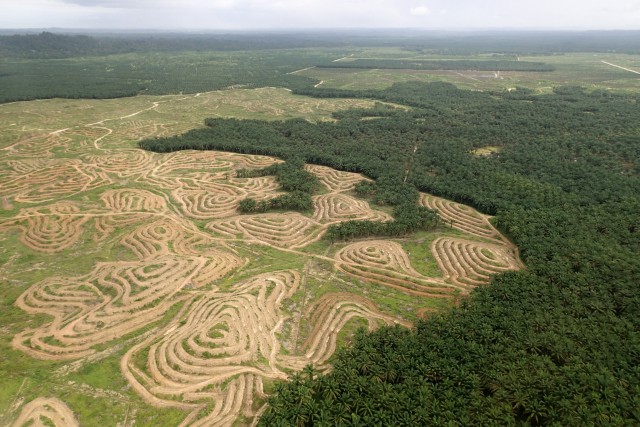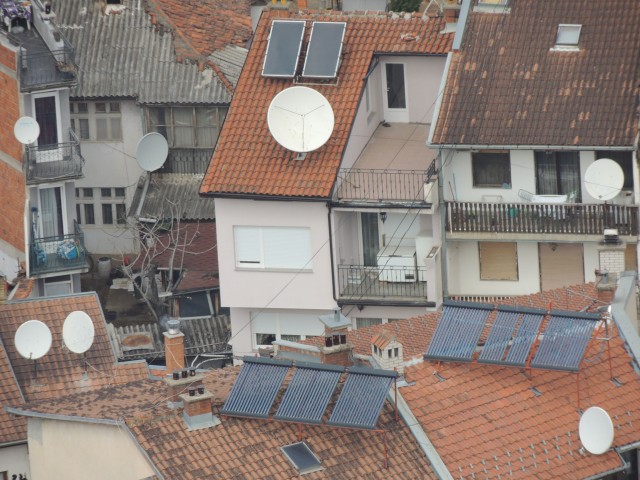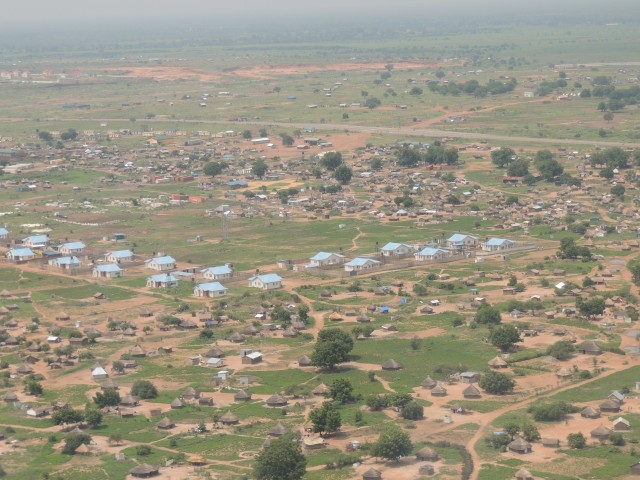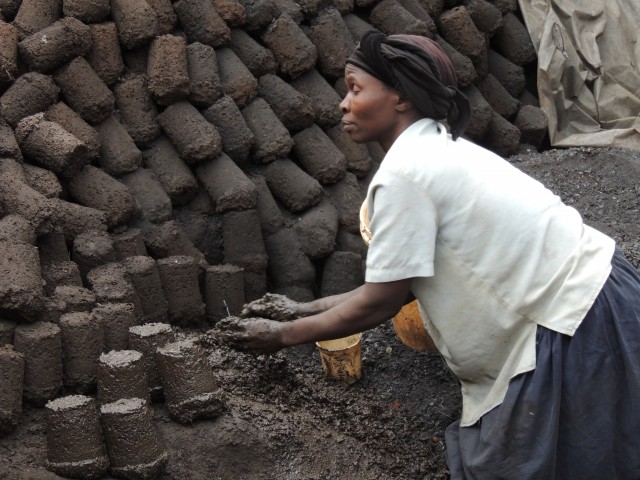
Keywords: off-grid energy; village power; decentralized energy, energy services, energy innovation.
Overview:
Two critically important and interlinked challenges face the global community in the 21st century: the persistence of widespread energy poverty and the resulting lost economic opportunity; and intensifying human-driven climate disruption. These crises are inexorably linked through the energy technology systems that have so far provided the vast majority of our energy: biomass and fossil fuels. Both the energy service crisis and the climate crisis have become increasingly serious over the past decades, even though we have seen greater clarity over the individual and social costs that each has brought to humanity.
The Sustainable Energy Imperative:
The correlation between access to electricity and a wide range of social goods is overwhelming. However, access to improved energy services alone does not provide a surefire pathway to economic opportunity and an improved quality of life. In Figure 2 we show the correlations that exist between electricity access across nations and a variety of measures of quality of life, such as the Human Development Index (a measure of well-being based in equal thirds on gross national income, life expectancy, and educational attainment). Other indicators studied include gender equality in educational opportunity, and the percentage of students who reach educational milestones. All of these indices improve significantly and roughly linearly with access to electricity. At the same time, the percentage of people below the poverty line, and childhood mortality, both decline with increasing energy access1.
Figure 1: A village micro-grid energy and telecommunications system in the Crocker Highlands of Sabah, Malaysian Borneo. The system serves a community of two hundred, and provides household energy services, telecoms and satellite (dish shown), water pumping for fish ponds (seen at center) and for refrigeration. The supply includes micro-hydro and solar generation (one small panel shown here, others are distributed on building rooftops). Photo credit: Daniel M. Kammen.
Figure 2: The Human Development Index (HDI) and various additional metrics of quality of life plotted against the percentage of the population with electricity access. Each data point is country level data a specific point in time. For additional data, see Alston, Gershenson, and Kammen, 20151.
Today the gap between global population and those with electricity access stands at roughly 1.3 billion, with energy services for the unelectrified coming largely from kerosene and traditional biomass, including dung and agricultural residues. This ‘access gap’ has persisted as grid expansion programmes and population have grown.
Grid expansion has roughly kept pace with the increase in the global population. About 1.4 billion people in 2013 are completely off-grid, and many ostensibly connected people in the developing world experience significant outages that range from 20–200+ days a year. The majority of these off-grid residents are in rural and underserved peri-urban areas. Current forecasts are that this number will remain roughly unchanged until 2030, which would relegate a significant portion of the population and the economies of many of the neediest countries on earth to fragile, underproductive lives with less options than they could otherwise have. Traditional grid extension will be slowest to reach these communities. Unless the advances in both energy and information systems that have occurred over the past decade are more widely adopted, there will be little if any chance to alter this trend.
Advances in off-grid systems
Recently we have seen an emergence of off-grid electricity systems that do not require the same supporting networks as the traditional forms of centralized power generation. These technological innovations are as much based on information systems as they are directly about energy technology. While traditional electricity grids can gradually pay off (amortize) the costs of expensive generation, transmission and distribution capital equipment across many customers and across many decades, a new business model is needed to rapidly bring energy services to the rural and urban poor. Mini-grids and products for individual user end-use such as solar home systems have benefitted from dramatic price reductions and performance advances in solid state electronics, cellular communications technologies, electronic banking, and in the dramatic decrease in solar energy costs2. This mix of technological and market innovation has contributed to a vibrant new energy services sector that in many nations has outpaced traditional grid expansion.
The comparison between the utility model of central-station energy systems and this new wave of distributed energy providers is instructive. Traditional dynamo generators and arc lighting perform best at large scale, and they became the mainstay of large-scale electric utilities. The classic utility model of a one-way flow of energy from power plant to consumers is now rapidly changing. The combination of low-cost solar, micro-hydro, and other generation technologies coupled with the electronics needed to manage small-scale power and to communicate to control devices and to remote billing systems has changed village energy. High-performance, low-cost photovoltaic generation, paired with advanced batteries and controllers, provide scalable systems across much larger power ranges than central generation, from megawatts down to fractions of a watt3.
The rapid and continuing improvements in end-use efficiency for solid state lighting, direct current televisions, refrigeration, fans, and information and communication technology (ICT, as seen in Figure 1) have resulted in a ‘super-efficiency trend’. This progress has enabled decentralized power and appliance systems to compete with conventional equipment for basic household needs. These rapid technological advances in supporting clean energy both on- and off-grid are furthermore predicted to continue. This process has been particularly important at the individual device and household (solar home system) level, and for the emerging world of village mini-grids3.
Diverse Technology Options to Provide Energy Services for the Unelectrified:
With these technological cornerstones, aid organizations, governments, academia, and the private sector are developing and supporting a wide range of approaches to serve the needs of the poor, including pico-lighting devices (often very small 1 – 2 watt solar panels charging lithium-ion batteries which in turn power low-cost/high efficiency light emitting diode lights), solar home systems (SHS), and community-scale micro- and mini-grids. Decentralized systems are clearly not complete substitutes for a reliable grid connection, but they represent an important level of access until a reliable grid is available and feasible. They provide an important platform from which to develop more distributed energy services. By overcoming access barriers often through market-based structures, these systems provide entirely new ways to bring energy services to the poor and formerly un-connected people.
Meeting peoples’ basic lighting and communication needs is an important first step on the ‘modern electricity service ladder’ 4. Eliminating kerosene lighting from a household improves household health and safety while providing significantly higher quality and quantities of light. Fuel based lighting is a $20 billion industry in Africa alone, and tremendous opportunities exist to both reduce energy costs for the poor, and to improve the quality of service. Charging a rural or village cell phone can cost $5 – 10/kWh at a pay-for-service charging station, but less than $0.50 cents/kWh via an off-grid product or on a mini-grid.
This investment frees income and also tends to lead to higher rates of utilization for mobile phones and other small devices. Overall, the first few watts of power mediated through efficient end-uses lead to benefits in household health, education, and poverty reduction. Beyond basic needs there can be a wide range of important and highly-valued services from decentralized power (e.g., television, refrigeration, fans, heating, ventilation and air-conditioning, motor-driven applications) depending on the power level and its quality along with demand-side efficiency.
Experience with the ‘off-grid’ poor confirms the exceptional value derived from the first increment of energy service—equivalent to 0.2–1 Wh/day for mobile phone charging or the first 100 lumen-hours of light. Given the cost and service level that fuel-based lighting and fee-based mobile phone charging provide as a baseline, simply shifting this expenditure to a range of modern energy technology solutions could provide a much better service, or significant cost savings over the lifetime of a lighting product (typically 3–5 years).
Mirroring the early development of electric utilities, improvements in underlying technology systems for decentralized power are also being combined with new business models, institutional and regulatory support, and integrated information technology systems5, 6. Historically, the non-technical barriers to adoption have been impediments to widespread adoption of off-grid electricity, and in some cases they still are. A lack of appropriate investment capital also hampers the establishment and expansion of private sector initiatives. Furthermore, complex and often perverse policy environments impair entry for clean technologies and entrench incumbent systems. Subsidies for liquid lighting fuels can reduce the incentive to adopt electric lighting. In addition, the prevalence of imperfect or inaccurate information about quality can lead to market spoiling4 and is also manifested by a lack of consumer understanding and awareness of alternatives to incumbent lighting technology.
Testing laboratories that rate the quality of the lighting products and disseminate the results are an invaluable step in increasing the quality and competitiveness of new entrants into the off-grid and mini-grid energy services space. The Lighting Global (https://www.lightingglobal.org) programme5 is one example of an effort that began as an industry watchdog, but has now become an important platform that provides market insights, steers quality assurance frameworks for modern, off-grid lighting devices and systems, and promotes sustainability through a partnership with industry.
An Action Agenda for Energy Access:
The diversity of new energy service products available, and the rapidly increasing demand for information and communication services, water, health and entertainment in villages worldwide has built a very large demand for reliable and low-cost energy7. Combining this demand with the drive for clean energy brings two important objectives that were for many years seen as in direct competition with alignment around the suite of new clean energy products that can power village energy services.
To enable and expand this process, a range of design principles emerge that can form a roadmap to clean energy economies:
- Establish clear goals at the local level: Universal energy access is the global goal by 20307, but establishing more near-term goals that embody meaningful steps from the present situation will show how what is possible and at what level of effort. Cities and villages have begun with audits of energy services, costs, and environmental impacts. A number of tools are often cited as excellent starting points, including the climate footprint assessment tools like http://coolclimate.berkeley.edu, and the HOMER software package (http://www.homerenergy.com) used by many groups to design both local mini-grids and to plan and cost out off-grid energy options
- Empower villages as both designers and as consumers of localized power: Village solutions necessarily vary greatly, but clean energy resource assessments, evaluation of the needed infrastructure investment, and, most often neglected but most important, the social structures around which sufficient training exists to make the village energy system a success. In a pilot in rural Nicaragua, once the assessment was complete8 movement from evaluation to implementation quickly became a goal of both the community and a local commercial plant.
- Make equity a central design consideration: Community energy solutions have the potential to liberate women entrepreneurs and disadvantaged ethnic minorities by tailoring user-materials and energy plans to meet the cultural and linguistic needs of these communities. National programmes often ignore business specialties, culturally appropriate cooking and other home energy needs. Thinking explicitly about this is both good business and makes the solutions much more likely to be adopted.
References & Further Reading:
- Alstone, Peter, Gershenson, Dimitry and Daniel K. Kammen (2015) Decentralized energy systems for clean electricity access, , , 305 – 314.
- Alstone, Peter, Gershenson, Dimitry and Daniel K. Kammen (2015) Decentralized energy systems for clean electricity access, Nature Climate Change, 5, 305 – 314.
- Zheng, Cheng and Kammen, Daniel (2014) An Innovation-Focused Roadmap for a Sustainable Global Photovoltaic Industry, Energy Policy, 67, 159–169.
- Daniel Schnitzer, Deepa Shinde Lounsbury, Juan Pablo Carvallo, Ranjit Deshmukh, Jay Apt, and Daniel M. Kammen (2014) Microgrids for Rural Electrification: A critical review of best practices based on seven case studies (United National Foundation: New York, NY). http://energyaccess.org/images/content/files/MicrogridsReportFINAL_high.pdf
- Casillas, C. and Kammen, D. M. (2010) The energy-poverty-climate nexus, Science, 330, 1182
- Azevedo, I. L., Morgan, M. G. & Morgan, F. (2009) The transition to solid-state lighting. Proceedings of the IEEE 97, 481–510 (2009).
- Mileva, A., Nelson, J. H., Johnston, J., and Kammen, D. M. (2013) SunShot Solar Power Reduces Costs and Uncertainty in Future Low-Carbon Electricity Systems, Environmental Science & Technology, 47 (16), 9053 – 9060.
- Sovacool, B. K. The political economy of energy poverty: A review of key challenges. Energy for Sustainable Development 16, 272–282 (2012).
- SE4ALL. (2013) Global Tracking Framework (United Nations Sustainable Energy For All, New York, NY).




You must be logged in to post a comment.